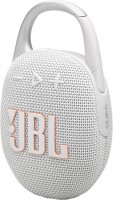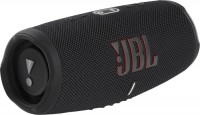Portable Speakers JBL series Go (compact)
prices on 5 modelsJBL Go
In terms of their design and implementation, the JBL Go speakers have noticeable similarities with the JBL Clip models: the sound is also mono, the power of the built-in speakers does not exceed 5 W, and low frequencies are heard only above 100 Hz. The only difference is that Go models do not have a carabiner for attaching to a backpack, bag, clothes or bicycle handlebars.
Early JBL Go models were made in the spirit of a compact radio or speakerphone, where the rectangular body sits on a table facing the listener, the main controls are located on the top panel, and more complex sound settings are left to the mobile application.
 |
However, in the Go 3 model (note: released in the fall of 2020), JBL engineers shifted their emphasis: the body became more rounded, a carbine mount appeared on the left side, and some of the controls moved from the top panel to the right side. At the same time, the case protection has been upgraded to IP67 level, so you can listen to Go 3 on the beach or near the pool without worrying that it will accidentally fall into the water or be splashed.
If we put design aside, all members of the Go family are gradually evolving technically, but at the same time adhering to the original ideas inherent in the series. In particular, they all use a Bluetooth channel to connect to a smartphone, player, tablet or laptop. The body is made of plastic. Earlier models used microUSB for charging; products from 2020 and later have switched to USB C. The average battery life in all cases is 5 hours. The choice of body colors is quite wide and usually amounts to about a dozen different options.





